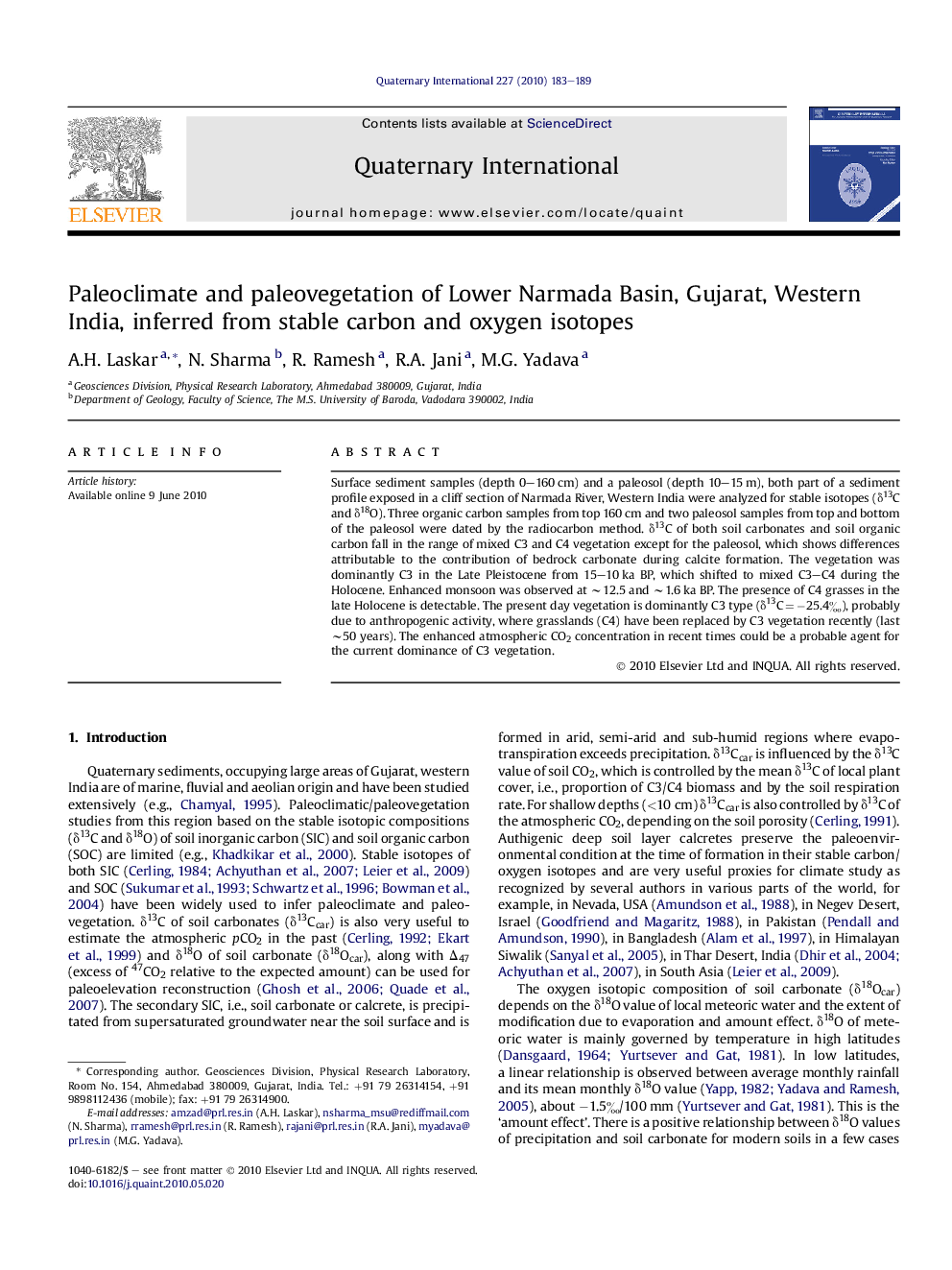| کد مقاله | کد نشریه | سال انتشار | مقاله انگلیسی | نسخه تمام متن |
|---|---|---|---|---|
| 1043660 | 944626 | 2010 | 7 صفحه PDF | دانلود رایگان |

Surface sediment samples (depth 0–160 cm) and a paleosol (depth 10–15 m), both part of a sediment profile exposed in a cliff section of Narmada River, Western India were analyzed for stable isotopes (δ13C and δ18O). Three organic carbon samples from top 160 cm and two paleosol samples from top and bottom of the paleosol were dated by the radiocarbon method. δ13C of both soil carbonates and soil organic carbon fall in the range of mixed C3 and C4 vegetation except for the paleosol, which shows differences attributable to the contribution of bedrock carbonate during calcite formation. The vegetation was dominantly C3 in the Late Pleistocene from 15–10 ka BP, which shifted to mixed C3–C4 during the Holocene. Enhanced monsoon was observed at ∼12.5 and ∼1.6 ka BP. The presence of C4 grasses in the late Holocene is detectable. The present day vegetation is dominantly C3 type (δ13C = −25.4‰), probably due to anthropogenic activity, where grasslands (C4) have been replaced by C3 vegetation recently (last ∼50 years). The enhanced atmospheric CO2 concentration in recent times could be a probable agent for the current dominance of C3 vegetation.
Journal: Quaternary International - Volume 227, Issue 2, 15 November 2010, Pages 183–189